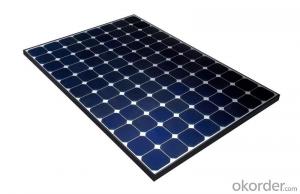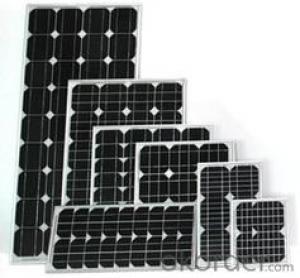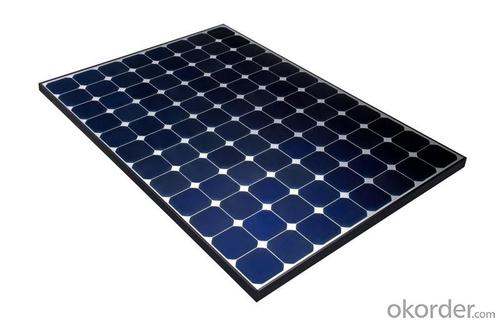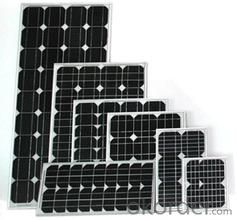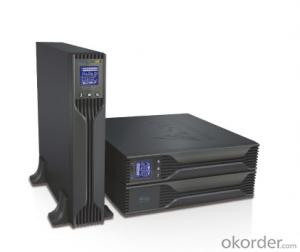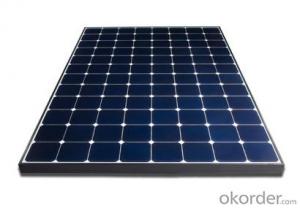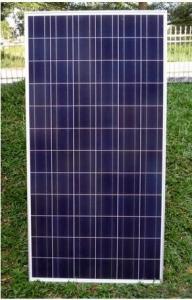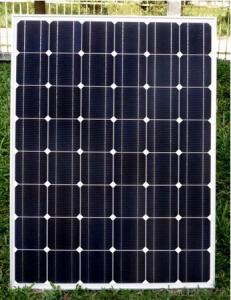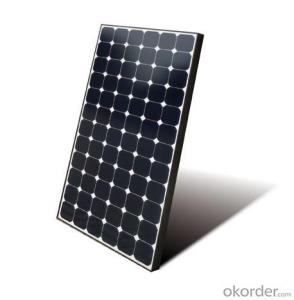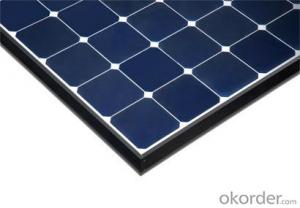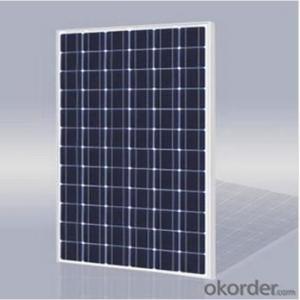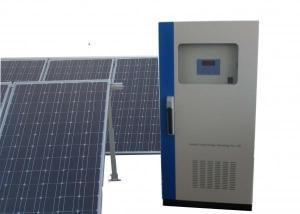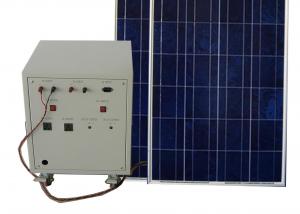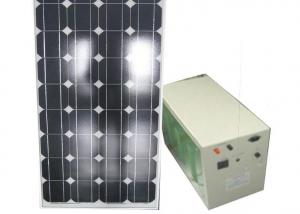Portable Solar Energy Systems - CNBM On Grid System 4000W with Certificate UL, TUV, CE
- Loading Port:
- Shanghai
- Payment Terms:
- TT OR LC
- Min Order Qty:
- 100 watt
- Supply Capability:
- 1000 watt/month
OKorder Service Pledge
OKorder Financial Service
You Might Also Like
Specification
CNBM On Grid System 4000W with Certificate UL TUV CE
Product description
Connection of the photovoltaic power system can be done only through an interconnection agreement between the consumer and the utility company. The agreement details the various safety standards to be followed during the connection.[4]
Systems such as Net Metering and Feed-in Tariff which are offered by some system operators, can offset a customers electricity usage costs. In some locations though, grid technologies cannot cope with distributed generation feeding into the grid, so the export of surplus electricity is not possible and that surplus is earthed.
Grid-connected PV systems are comparatively easier to install as they do not require a battery system.[1][6]
Grid interconnection of photovoltaic (PV) power generation systems has the advantage of effective utilization of generated power because there are no storage losses involved.[7]
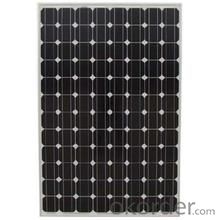
Application
Industrial
Commercial
Residential
Feature
Residential, grid-connected rooftop systems which have a capacity more than 10 kilowatts can meet the load of most consumers.[2] They can feed excess power to the grid where it is consumed by other users. The feedback is done through a meter to monitor power transferred. Photovoltaic wattage may be less than average consumption, in which case the consumer will continue to purchase grid energy, but a lesser amount than previously. If photovoltaic wattage substantially exceeds average consumption, the energy produced by the panels will be much in excess of the demand. In this case, the excess power can yield revenue by selling it to the grid. Depending on their agreement with their local grid energy company, the consumer only needs to pay the cost of electricity consumed less the value of electricity generated. This will be a negative number if more electricity is generated than consumed.[3] Additionally, in some cases, cash incentives are paid from the grid operator to the consumer.
Packaging
With carton and box
- Q: How do solar energy systems impact the electricity distribution infrastructure?
- Solar energy systems can have a significant impact on the electricity distribution infrastructure by reducing the strain on the grid. As more homes and businesses adopt solar panels, it decreases the demand for electricity from traditional power plants. This leads to a more balanced and efficient distribution of electricity, reducing the need for costly infrastructure upgrades. Additionally, solar energy systems can generate excess electricity, which can be fed back into the grid and distributed to other users, further optimizing the distribution infrastructure.
- Q: Can solar energy systems be used for powering greenhouses?
- Yes, solar energy systems can definitely be used for powering greenhouses. Solar panels can be installed on the roof or walls of a greenhouse to capture sunlight and convert it into electricity. This renewable energy can then be used to power various systems within the greenhouse, such as ventilation, heating, cooling, and lighting. Solar energy offers several advantages for powering greenhouses. Firstly, it is a clean and sustainable source of energy, which helps reduce greenhouse gas emissions and environmental impact. Secondly, solar power is reliable and abundant, especially in regions with ample sunlight. This means that greenhouses can have a consistent and uninterrupted power supply, even in remote or off-grid locations. Additionally, solar energy systems can help reduce operating costs for greenhouse owners. Once the initial investment in solar panels and equipment is made, the ongoing energy costs are significantly lower compared to traditional fossil fuel-based systems. This can lead to substantial long-term savings, especially for larger-scale commercial greenhouses. Moreover, solar energy systems can be integrated with energy storage solutions, such as batteries, to store excess energy generated during the day. This stored energy can then be used during cloudy periods or at night, ensuring a continuous power supply for the greenhouse. Overall, solar energy systems are a viable and sustainable option for powering greenhouses. They offer numerous benefits, including reduced environmental impact, reliable energy supply, cost savings, and the ability to integrate with energy storage solutions.
- Q: What is the role of maximum power point tracking (MPPT) in a solar energy system?
- The role of maximum power point tracking (MPPT) in a solar energy system is to optimize the efficiency and output of the system by continuously tracking and adjusting the operating point of the solar panels to the maximum power point. This ensures that the panels are operating at their peak power production, maximizing the amount of energy captured from the sunlight and increasing the overall efficiency of the solar energy system.
- Q: Can solar energy systems be used for heating swimming pools?
- Yes, solar energy systems can be used for heating swimming pools. Solar pool heating systems use energy from the sun to heat the water in the pool, reducing the need for conventional heating methods and saving energy costs.
- Q: Can solar energy systems be used for powering off-grid eco-resorts?
- Yes, solar energy systems can be used to power off-grid eco-resorts. Solar panels can be installed to convert sunlight into electricity, which can then be used to power various appliances and facilities in the resort. This sustainable and renewable energy source aligns well with the eco-friendly concept of off-grid resorts, reducing reliance on fossil fuels and minimizing environmental impact. Additionally, solar energy systems can be combined with energy storage solutions, such as batteries, to ensure a continuous power supply even during periods of limited sunlight.
- Q: How does the presence of birds or other wildlife affect the performance of solar panels?
- The presence of birds or other wildlife can potentially affect the performance of solar panels. Birds can leave droppings on the panels, which can create shading and reduce the amount of sunlight reaching the surface. Additionally, nesting materials or debris brought by birds may obstruct the panels and impact their efficiency. However, the overall impact on performance is usually minimal, and measures such as regular maintenance and installing bird deterrents can help mitigate any potential issues.
- Q: What is the role of surge protectors in a solar energy system?
- The role of surge protectors in a solar energy system is to safeguard the system from power surges and voltage spikes. They protect the sensitive electronic components of the solar panels, inverters, and other equipment from damage caused by sudden increases in electrical current. By diverting excess voltage safely to the ground, surge protectors help maintain the efficiency and longevity of the solar energy system.
- Q: Are solar energy systems noisy?
- No, solar energy systems are generally quiet as they do not involve moving parts or combustion processes.
- Q: Can solar energy systems be installed in areas with extreme weather conditions?
- Solar energy systems can indeed be installed in regions with harsh weather conditions. Though extreme heat, cold, wind, or snow may potentially affect the efficiency of solar energy systems, modern solar technology has been engineered to endure such conditions. Solar panels are constructed using sturdy materials capable of withstanding high temperatures, freezing temperatures, and strong winds. Furthermore, solar panels undergo rigorous testing and certification to meet industry standards for durability and performance in various weather conditions. In areas with extreme heat, solar panels are designed to dissipate heat and maintain optimal efficiency. They are thoroughly tested to ensure they can sustain high temperatures without any damage or significant performance loss. Similarly, solar panels in areas with extreme cold are built to withstand freezing temperatures and can even generate electricity in snowy conditions. Some solar panels feature anti-reflective coatings to absorb more sunlight and expedite snow melting. Moreover, solar energy systems are commonly installed with robust mounting systems and structures capable of enduring strong winds or storms. These systems are engineered to ensure that solar panels remain securely attached to roofs or ground mounts, even in hurricane-prone or high-wind regions. Though the performance of solar energy systems may be slightly affected by extreme weather conditions, proper installation and design enable solar panels to still generate electricity and provide a dependable source of renewable energy in such areas. It is advisable to seek guidance from experienced solar installers or engineers who can evaluate the specific weather conditions of a given region and develop a solar energy system capable of withstanding those conditions.
- Q: What is the difference between solar thermal and solar PV systems?
- Solar thermal systems use sunlight to heat water or other fluids, which can then be used for various purposes like heating buildings or generating electricity. On the other hand, solar PV (photovoltaic) systems directly convert sunlight into electricity using solar panels made up of photovoltaic cells. While solar thermal systems are primarily used for heating, solar PV systems are designed for generating electricity.
Send your message to us
Portable Solar Energy Systems - CNBM On Grid System 4000W with Certificate UL, TUV, CE
- Loading Port:
- Shanghai
- Payment Terms:
- TT OR LC
- Min Order Qty:
- 100 watt
- Supply Capability:
- 1000 watt/month
OKorder Service Pledge
OKorder Financial Service
Similar products
Hot products
Hot Searches
Related keywords
